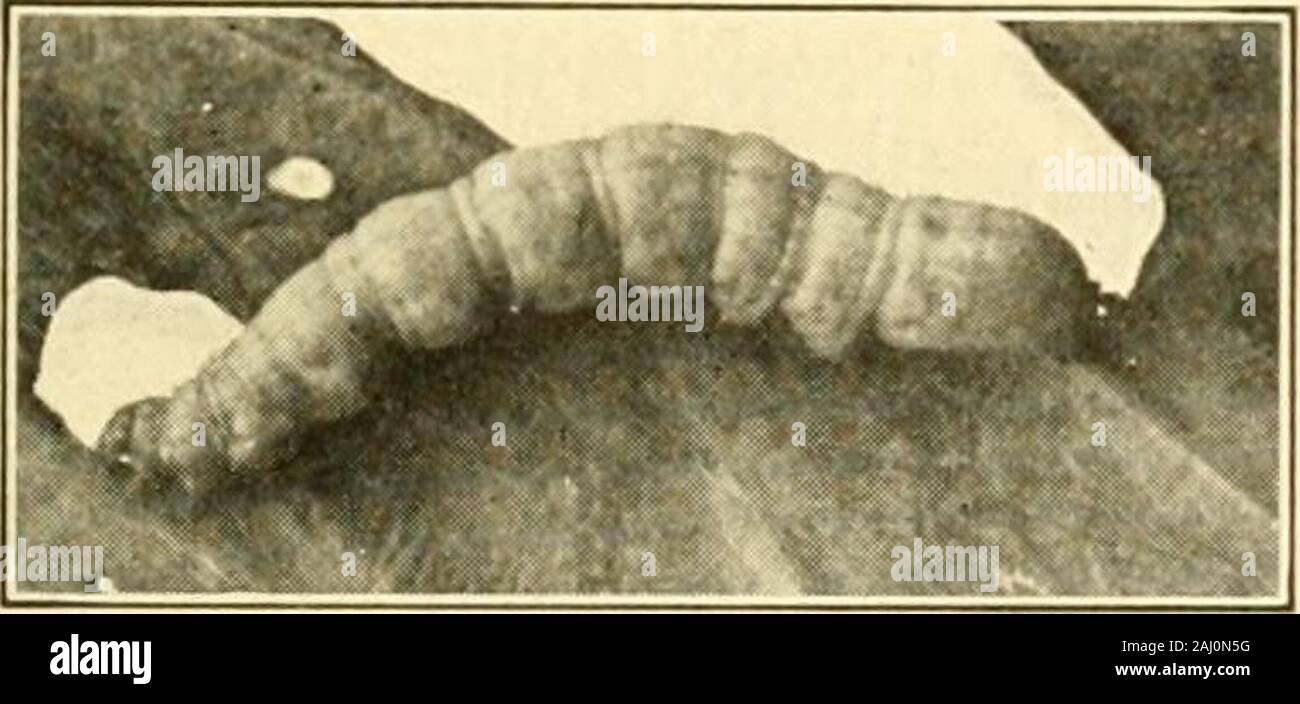Manual of vegetable-garden insects . Fig. 12. — Moth of the cabbage looper (X I3). poison because the caterpillars refuse to eat leaves coatedwith an insecticide and move quickly to some part of theplant that has been missed in spraying. Furthermore, it isnot easy to spray a cabbage plant so as to cover all parts of the leaves, especially theunderside of the outer leavesand those in the forminghead. Experiments on LongIsland have shown that goodresults may be obtained bythorough spraying with parisgreen, 1 pound in 80 gallonsof water to which the resin-lime mixture has been added. Some growers

Image details
Contributor:
The Reading Room / Alamy Stock PhotoImage ID:
2AJ0N5GFile size:
7.2 MB (247.3 KB Compressed download)Releases:
Model - no | Property - noDo I need a release?Dimensions:
2300 x 1087 px | 38.9 x 18.4 cm | 15.3 x 7.2 inches | 150dpiMore information:
This image is a public domain image, which means either that copyright has expired in the image or the copyright holder has waived their copyright. Alamy charges you a fee for access to the high resolution copy of the image.
This image could have imperfections as it’s either historical or reportage.
Manual of vegetable-garden insects . Fig. 12. — Moth of the cabbage looper (X I3). poison because the caterpillars refuse to eat leaves coatedwith an insecticide and move quickly to some part of theplant that has been missed in spraying. Furthermore, it isnot easy to spray a cabbage plant so as to cover all parts of the leaves, especially theunderside of the outer leavesand those in the forminghead. Experiments on LongIsland have shown that goodresults may be obtained bythorough spraying with parisgreen, 1 pound in 80 gallonsof water to which the resin-lime mixture has been added. Some growers dust the plantslightly with pure paris green and have reported satisfactoryresults from this treatment.. Fig. 13. A diseased cabbage looper(Xli). 12 MANUAL OF VEGETABLE-GARDEN INSECTS References Riley, U. S. Ent. Rept. for 1883, pp. 119-122. N. Y. (Geneva) Agi. Exp. Sta. Bull. 83, pp. 667-671. 1894. N. Y. (Geneva) Agr. Exp. Sta. Bull. 144. 1898. The Diamond-Back Moth Pluiella maculipennis Curtis In this country the diamond-back moth is rarely more than aminor enemy of cabbage and related crops, but in some partsof its extensive range its injuries are of considerable importance.Apparently introduced from Europe some time before 1854, the insect is now widely distributed throughout the UnitedStates and Canada; it also occurs in South America, Australia, New Zealand, South iVfrica, India, Greenland and Spitzbergen.It seems able to maintain itself wherever its food plants aregrown, whether in the tropics or in the arctic region. In Eng-land the insect is also known as the turnip fly and in some partsof the United States it is called the shot-hole worm. Besidescabbage, cauliflower, brussels spr